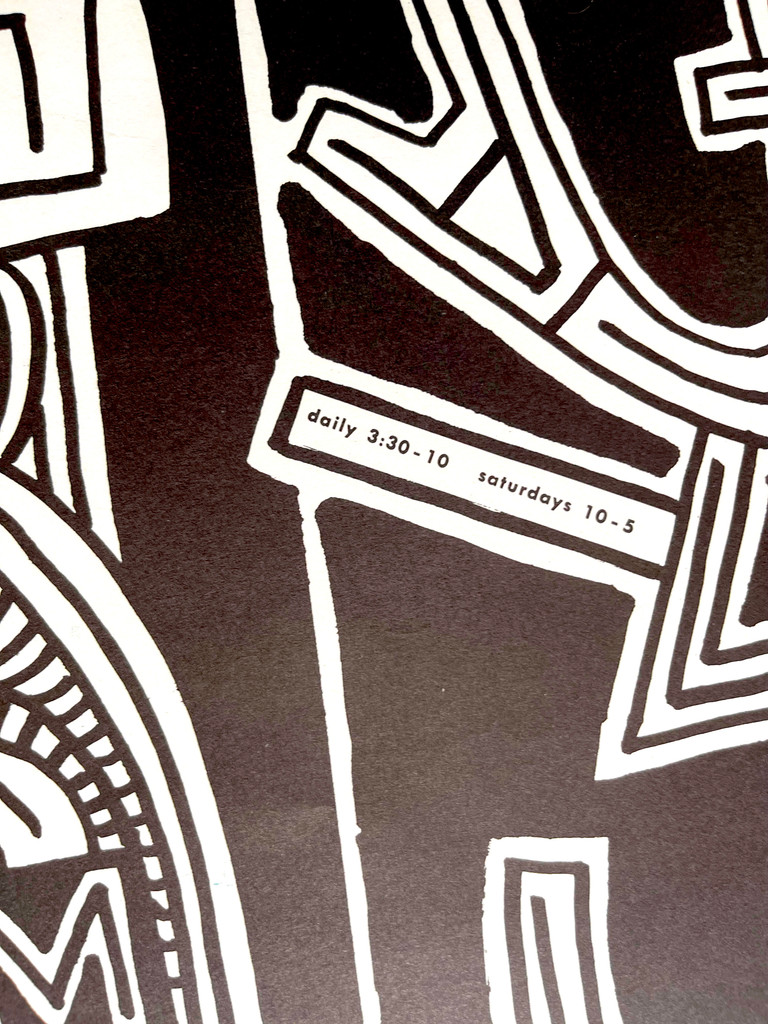
An Educated Collector is Our Best Client
In business for nearly two decades, we are a well established, popular contemporary art boutique specializing in expertly chosen, blue chip prints, multiples, uniques, books, ephemera and merchandise at different price points, with a focus on the secondary market. Please click on the "Contact Us" button at the bottom of this page for questions about any work, pricing and/or to arrange to visit our showroom/gallery - located in between Manhattan's Flatiron and Chelsea Flower Districts.
H.C. Westermann, Thomas Kapsalis, Rare artist designed early poster: Westermann and Kapsalis Sculpture at Four Fourteen Art Center and Gallery Chicago, 1957
CONTACT GALLERY FOR PRICE
Description
H.C. Westermann, Thomas Kapsalis
Rare artist designed early poster: Westermann and Kapsalis Sculpture at Four Fourteen Art Center and Gallery Chicago, 1957
Historic offset lithograph poster designed by both artists
Not signed
17 × 22 inches
Unframed
This extremely rare poster on handmade paper was published for the Tom Kapsalis/H.C. Westermann sculpture exhibition at 414 Art Workshop and Gallery, Chicago Momentum, 1020 Art Center, Chicago in December 1957. The poster was hand designed by both artists, with each one designing his respective half for a cohesive whole, for an exhibition at a small, now defunct regional art center in the late fifties -- so it's not unreasonable to believe that there just aren't too many of these out there anymore. A must have for anyone seriously involved in the careers and legacies of each or both of these sculptors.
About H.C. Westermann:
American artist Horace Clifford Westermann (Los Angeles, 1922 – Danbury, 1981) assembled a distinctive and singular body of sculptures. His works were predominantly made from wood through his masterly command of carpentry and cabinetmaking, yet he also used other techniques and materials such as metal, glass and enamelling with incredible precision. Without adhering to one particular style, Westermann was a maker of objects, of separate pieces: his sculptures, laden with meaning, often irony, result from the processing of experience, coalescing to yield specific fragments of reality.
It is the course of these fragments that the retrospective presented by the Museo Reina Sofía follows. A concern with going back to shelter would soon emerge, be it in the home or the body —and blighted by the threat of confinement and death. Also, stubborn or helpless figures would recur through Westermann’s oeuvre. The motif of the “death ship” runs right through the breadth of his production as well, pointing, on one side, to continued wandering and latent abandonment and, on the other, to a determined pursue of refuge which seems to hold firm across his work.
At the turning point of the 1960s, Westermann’s sculptures drew from mass culture, and made part of several exhibitions of the new realisms, when the “cold” tag of Pop art had not yet fully taken shape. The exhibition presents this output and the “specificity” of Westermann’s objects, which interested Donald Judd in 1963. In later pieces his work increasingly deals with the absurd, either through playfulness with language, in the confusion between work and instrument, or with references to the impermanent
Besides the sculptures, the show displays Westermann’s paintings, letter-drawings —in his correspondence with other artists, critics and friends— and series of prints, in which he applied vibrant colours to address themes such as an escapist, while critical depiction of the American scene; catastrophe, and fragility.
A graduate from the School of the Art Institute of Chicago in 1954, Horace Clifford Westermann produced most of his work from a small town in Connecticut, where he settled in 1961. He regularly exhibited his work in New York, and occasionally in Chicago and on the West Coast.
Courtesy of Venus Over Manhattan
About Tom Kapsalis:
One of Chicago’s great abstractionists, painter Thomas H. Kapsalis (born 1922) has been an important artist and educator since the late ’40s, when he graduated from the School of the Art Institute. A prisoner of war in Germany, captured during the Battle of the Bulge, Kapsalis returned to continue his pursuit of art-making, eventually returning to Germany in the early ’50s on a Fullbright-Hays Fellowship to study with Willi Baumeister. He has taught at the School of the Art Institute since 1954, and his work has been exhibited in numerous group and solo shows. Among the honors bestowed upon Kapsalis are Huntington Harford Foundation Grants (1956, 1959); Robert Rice Jenkins Prize, Chicago & Vicinity Exhibition, Art Institute of Chicago (1956); Pauline Palmer Prize, Chicago & Vicinity Exhibition, AIC (1960); Mr. & Mrs. Julie F. Brower Prize, Chicago & Vicinity Exhibition, AIC (1969).
Courtesy of Corbett vs Dempsey
Publisher:
Four Fourteen Art Center and Gallery











